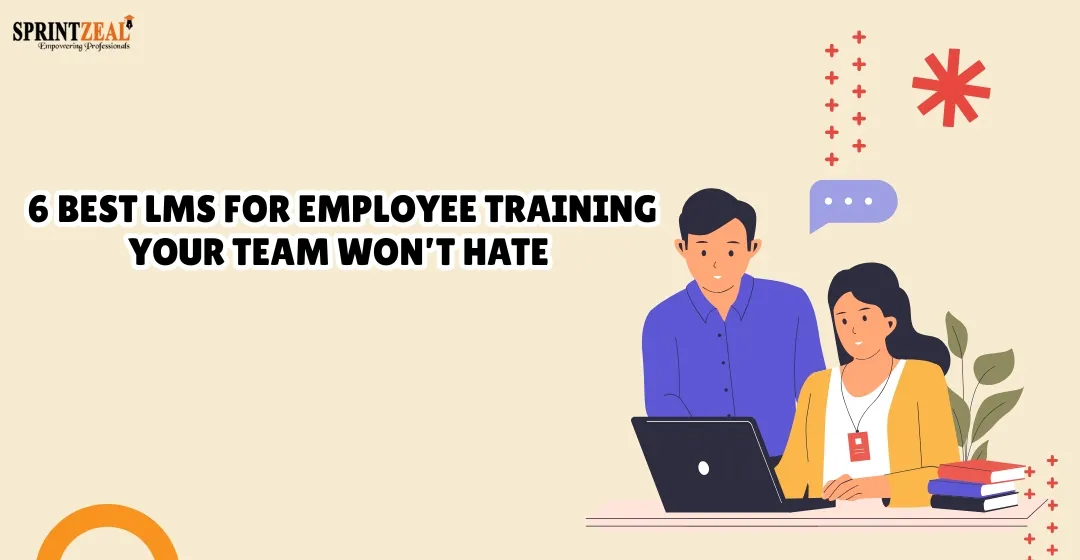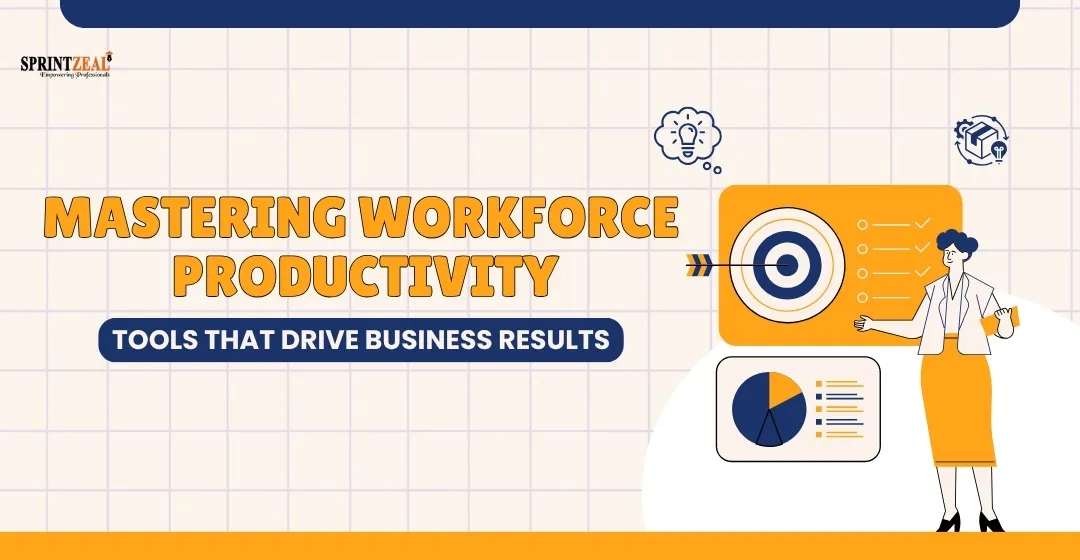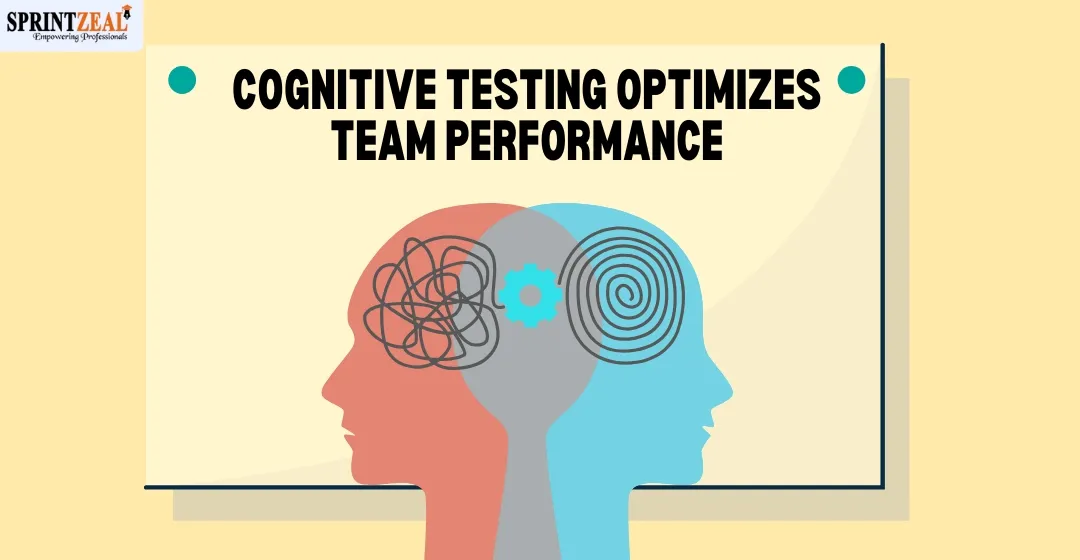6 Best LMS for Employee Training Your Team Won’t Hate
-
 By Sprintzeal
By Sprintzeal - Published on May 29 2025

Back when employee training meant gathering around a flip chart with stale biscuits, no one expected much. But no one remembered much either.
Today, even with the best LMS for employee training, many teams still tune out. The 2024 LinkedIn Workplace Learning Report found that nearly half of L&D professionals struggle most with one thing: keeping employees engaged.
Training gets rolled out, but courses are often left unfinished. Managers lose interest in tracking progress, and the platform slowly fades into the background. What started as a solution becomes just another tool no one really uses.
That’s not a technology issue. It’s a disconnect between what teams need and what platforms deliver.
In this blog, we’ll explain what makes an LMS effective, compare 6 top platforms, and help you understand which one best fits your training goals and team setup.
Table of Contents
What Makes an LMS Engaging for Employee Training
Many LMS platforms miss the mark by skipping the basics that actually make people want to use them. Here’s a simpler view of what makes an LMS engaging in real work settings:
An engaging employee training LMS includes:
- Clear navigation: Learners always know what to do next, and managers can track progress without digging through menus.
- Mobile access: Lessons work on any device, so employees can train on the go, during breaks, or while remote.
- Mix of content types: Videos, documents, quizzes, and more keep lessons interesting and match different learning styles.
- Progress tracking and reminders: Built-in tools show learners how far they’ve come and help admins follow up without chasing.
- Short, focused lessons: Quick modules make it easier to complete training and remember what was taught.
- Light motivation tools: Simple badges or progress markers can help learners keep going, without turning training into a game.
When an LMS does these things well, training feels easier to start, faster to finish, and more likely to stick. Adding an employee self service portal makes it even better by letting employees easily access training, check progress, and manage their learning anytime on their own.
Top 6 LMS for Employee Training
1. ProProfs Training Maker
Many teams struggle to get started with training because most LMS platforms are hard to set up and confusing to use. ProProfs Training Maker solves these problems by making it easy to build and share training from day one. With over 4 million learners using the platform, it’s one of the best LMS for employee training if you want something that works right away without a steep learning curve.
Why it works:
→ 100+ ready-made templates and courses: Skip building courses from scratch as the tool has over hundreds of professionally designed courses on compliance and leadership, which you can edit and customize.
→ AI-powered training creation: Instantly create employee training or quizzes by entering a topic, great for quick onboarding or compliance programs without starting from scratch.
→ Drag-and-drop course builder: Build courses easily by uploading content and dragging it into place; no coding or design skills are needed.
→ Built-in tracking and reports: See who’s completed training, how they scored, and where they got stuck to improve results.
→ Simple interface: A clean layout allows employees to focus on learning rather than figuring out the platform.
→ Mobile-friendly design: Courses work on any device, so employees can learn anytime, anywhere.
Best for:
This is for any team that wants a straightforward way to train people without dealing with a complicated system or waiting on IT.
2. 360Learning
Traditional top-down training often fails because it doesn’t include the people doing the work. 360Learning flips this by focusing on collaborative learning, where employees contribute to and improve courses based on real experience.
Why it works:
→ Peer-based course creation: Anyone can create or suggest training, helping teams share knowledge faster and keep content relevant.
→ Built-in feedback loops: Learners can leave comments, ask questions, and flag confusing content, which helps improve courses over time.
→ Project-focused learning paths: Teams can build short, goal-based lessons around real tasks, not just broad topics.
Best for:
Companies that want training to reflect real workflows and grow with their team.
3. TalentLMS
Many companies avoid using LMS platforms because setting them up takes too long, or the system feels too complex for everyday work. TalentLMS fixes this by offering a lightweight, easy-to-manage platform that fits into existing workflows without needing technical help.
Why it works:
→ Cloud-based and ready to go: No installations or setup delays, just create an account, add users, and start training.
→ Built-in content marketplace: Choose from ready-made courses on soft skills, compliance, and more, so you don’t have to build everything from scratch.
→ Role-based access: This allows admins, trainers, and learners to see what they need, keeping the platform simple and relevant for everyone.
→ Mobile access with offline mode: Employees can access lessons anytime, even without the internet. Progress is updated once they’re back online.
Best for:
Small to mid-sized teams looking for a flexible, low-maintenance LMS that supports quick rollout and hands-off management.
4. LearnUpon
Most employee training LMS platforms lack control and visibility for companies that manage training across departments, locations, or even clients. LearnUpon is built to handle this complexity while keeping things manageable for admins and learners.
Why it works:
→ Built-in reporting tools: Track learner progress, completion rates, and assessment scores with clear reports that help you measure impact.
→ SCORM and xAPI support: Easily upload structured training content from external tools or your instructional design team.
→ Custom branding and permissions: Customize each portal’s look and access levels so users see only what’s relevant to their role or team.
Best for:
Mid-sized to large organizations that need to deliver structured training across multiple groups while keeping everything in one place.
5. Absorb LMS
Some LMS platforms struggle under pressure when training needs grow fast or spread across teams. Absorb LMS is built to handle large-scale programs while staying flexible and easy to manage.
Why it works:
→ Scalable architecture: Handles thousands of users without slowing down, making it reliable for growing or global teams.
→ Smart admin controls: Allows you to organize content by department, role, or region, so learners only see what’s relevant to them.
→ Robust analytics: Offers detailed reports and dashboards to help you measure training impact and make better decisions.
→ Custom branding and learner portals: Allows you to tailor the look and structure of your training spaces to match different audiences or departments.
Best for:
Mid-sized to large organizations that need a powerful, scalable LMS with deeper reporting and admin control.
6. FreshLearn
FreshLearn is designed for creators, coaches, and small teams. Trainers who want to share and monetize their knowledge, grow their creator business, and build a community without juggling a bunch of tools or dealing with complicated tech find FreshLearn to be simple and easy to use, and most affordable.
Why it works:
→ Everything in one place: You can create courses, build a community, run marketing campaigns, and track performance—all from a single dashboard.
→ Keep what you earn: FreshLearn doesn’t take a cut of your sales, so your revenue stays yours (0% transaction fee).
→ Built-in AI support: Whether you need help outlining a course or writing quiz questions, the AI features help speed things up.
→ Custom-branded experience: FreshLearn lets you whitelabel your site on all paid plans, from your logo and domain to a fully branded mobile app.
Best for:
Creators, coaches, and small businesses that want a clean, user-friendly LMS to grow their audience and sell learning products, without extra tools or hidden fees.
Choosing an LMS? These 8 Checks Make It Easier
Even the best LMS for employee training won’t work if it doesn’t fit your needs. Here’s a simple checklist to help you pick the right one for your team:
1. Know Your Team Size and Structure
Some platforms are better for small teams with simple needs, while others are built to support thousands of users across departments. Make sure the LMS can grow with you if needed.
2. Set Your Budget Range Early
Pricing models vary; some charge per user, some offer flat rates, and others limit features by plan. Look beyond the starting price and check what’s included at each level.
3. Check Your Team’s Technical Comfort
If your admins or trainers aren’t tech-savvy, avoid platforms that require complex setup or advanced customizations. Look for tools that offer easy onboarding and intuitive dashboards.
4. Make Training Easy to Find
An LMS with strong search and navigation features, enhanced by eLearning SEO support, makes it simple for your team to locate and complete the courses they want.
5. Match Features to Training Goals
Are you running compliance training, onboarding, or upskilling? Choose an LMS that aligns with the type of training you’ll do most often and supports the formats you use (like videos, quizzes, or PDFs). You might also consider integrating content tools like Gizmo AI to streamline course development.
6. Ask the Right Usability Questions
Can learners complete training without getting stuck? Can managers view reports without clicking through five menus? If a platform doesn’t make these tasks easy, they’ll be ignored.
7. Don’t Ignore Support and Reliability
Check if support is available when you need it and whether the platform has a strong uptime record. A well-reviewed LMS that’s hard to reach when things go wrong will not save you time.
8. Try Before You Commit
Free trials and demos can reveal issues you won’t see in a feature list. Test workflows, upload sample content, and have a few team members use it before making a decision.
Wrapping Up
If you’ve made it this far, you’re not just shopping for features; you’re trying to make training actually work. And that’s the right mindset.
Most training platforms fail not because the content is bad, but because the system makes it too hard to engage with. When learning feels like an extra task instead of something useful, even the best content goes to waste.
A good LMS won’t need chasing. It will fit into how your team already works, support how they prefer to learn, and make progress visible without extra effort.
Test it with your team. If they don’t need help or reminders, you’re already halfway there.
Subscribe to our Newsletters
Popular Programs
Trending Posts
Streamlined Success: Blending Digital Tools and Physical Planners for Optimum Productivity in 2025
Last updated on Sep 17 2025
Self-Introduction for Interview: Tips & Best Examples
Last updated on Mar 4 2025
Mastering Workforce Productivity: How Time and Communication Tools Drive Business Results
Last updated on Jun 12 2025
The 3 AI-Powered Email Warmup Tools You Should Consider for Outreach
Last updated on Aug 26 2025
Managing Work More Effectively: Top Picks for Organizing Team Tasks
Last updated on Apr 29 2025
How Cognitive Testing Can Optimize Agile Team Performance
Last updated on Sep 17 2025
Categories
- Other 62
- Agile Management 58
- Cloud Computing 50
- Project Management 170
- Big Data 58
- Business Management 80
- Digital Marketing 73
- IT Service Management 29
- Programming Language 47
- AI and Machine Learning 67
- IT Security 108
- Quality Management 77
- IT Hardware and Networking 25
- Microsoft Program 4
- Workplace Skill Building 11
- Risk Management 9
- Information Security 8
- Leadership and Management 7
- Corporate Training and Development 1
Trending Now
Top 10 Productivity Training Courses for Workplace
ArticleSelf-Introduction for Interview: Tips & Best Examples
ArticleManaging Work More Effectively: Top Picks for Organizing Team Tasks
ArticleMastering Workforce Productivity: How Time and Communication Tools Drive Business Results
ArticleTop Reasons Why Binding Format Matters in Training Manuals
ArticleThe 3 AI-Powered Email Warmup Tools You Should Consider for Outreach
ArticleTop Team Leader Job Interview Questions & FAQs
ArticleHow Cognitive Testing Can Optimize Agile Team Performance
ArticleStreamlined Success: Blending Digital Tools and Physical Planners for Optimum Productivity in 2025
ArticleDesigning Training Slides to Simplify Complex Concepts
Article






